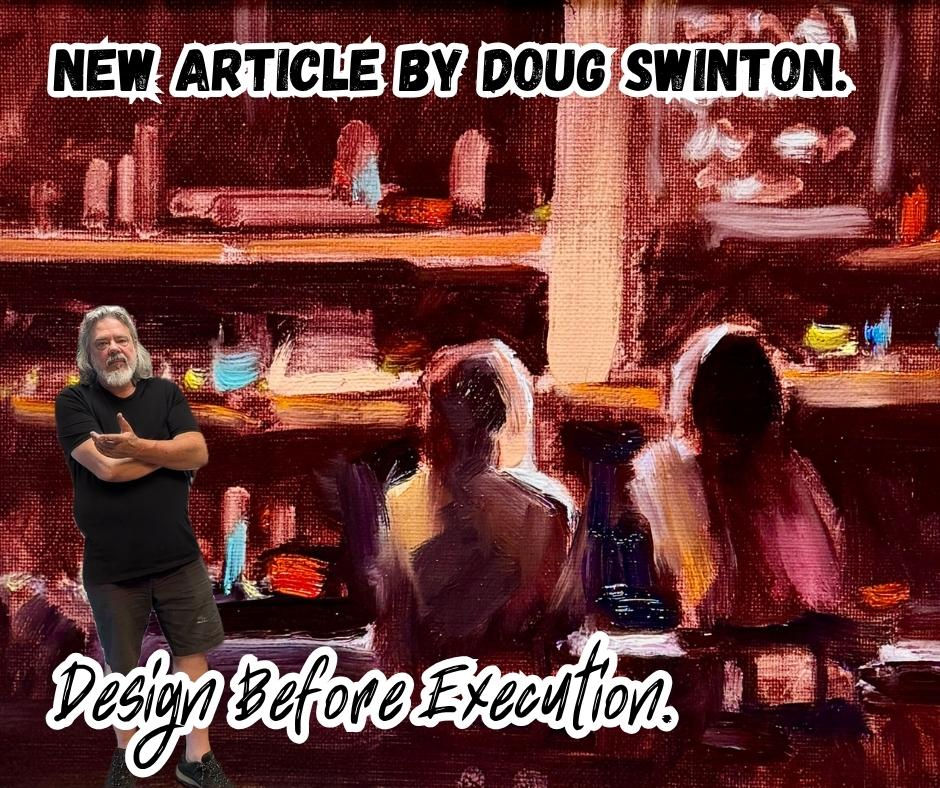How to Avoid Overworking Your Painting
- Doug Swinton

- Aug 4, 2014
- 2 min read
Updated: Nov 18, 2020
8 Simple Steps to finishing your painting

When is your painting finished?
There are no definite rules but it's easy to tell when something has been overworked because it seems unsure of itself. We offer some basic advice on how to overcome this common problem.
1. Lay out a plan. As Doug Swinton says in his workshopDrawing for Painters: "Most problems in a painting occur in the beginning and persist until it’s too late to fix them. Start with a quality sketch and see how easily the rest falls into place." In other words, begin your painting with your process in place. Create preliminary sketches and studies instead of working out the problems on your final canvas.
2. Step back often. If you are working from life, step back enough to see both your subject and your canvas together. If you are working from a photograph you should have the two images side by side so that you can compare. If you are working from your imagination you should step back so that you can see the work visually re-contextualized. Often when working we can become so visually absorbed as a result of intense concentration that we begin to lose site of the entire image. This can lead to the overworking of a particular area.
3. Use a mirror. Another way to re-contextualize your work is to look at it's reflection. If you are working in your studio, hang a mirror on the wall facing your easel. If you are outside, bring a small pocket mirror.
4.Think first, paint later. Every stroke of the brush, should have a purpose. Decide what that purpose is and get it down as quickly and simply as you can.
5. Scrape down your canvas to its surface. It is best to avoid leaving large amounts of inaccurate paint on your canvas to dry or to fiddle with it endlessly. Get rid of it and start over.
6. Compare your work in progress to finished works and reproductions of other artist’s work to help you visualize the desired finished state.
7. Avoid knee-jerk reactions. If you perceive a problem area, consciously evaluate it before deciding how to correct it. It is often the case that there are a combination of problems to adjust. Find out what they are before moving on.
8. Simplify, simplify, simplify!








The chaotic energy of Steal A Brainrot makes it a perfect fit for noisy gatherings, where structure and silence are not possible.
Overall, professional two-way radios remain a vital tool for industries that prioritize safety, coordination, and discounttwo-wayradio reliability. Their durability, long range, and advanced features make them far superior to casual communication devices, ensuring that teams can stay connected and productive under any conditions.
The demand for environmental consultants in Alberta continues to grow as industries and communities https://www.ethosenviro.ca/ recognize the importance of sustainability. Their expertise ensures that economic development aligns with ecological responsibility, protecting Alberta’s landscapes and natural resources. Ultimately, they serve as vital partners in shaping a greener, more sustainable future for the province.
Mindful eating is another key principle of smart nutrition. Paying attention to hunger cues, eating slowly, and avoiding distractions https://ezzday.com/ during meals improves digestion and helps prevent overeating. This awareness strengthens the brain-gut connection and encourages a healthier relationship with food.
Drug testing laws differ by region and industry. In some states or countries, certain substances may be decriminalized or allowed https://naturalcleansedetox.com/ for medical use. However, employers may still enforce zero-tolerance policies, so legal use doesn’t always guarantee protection from employment consequences.